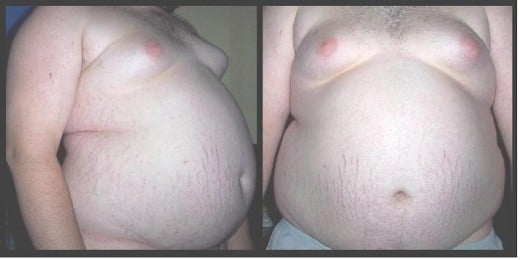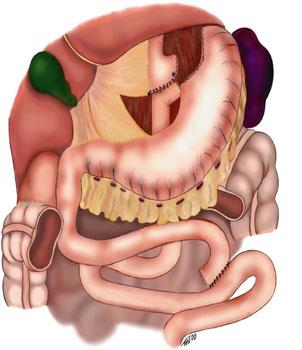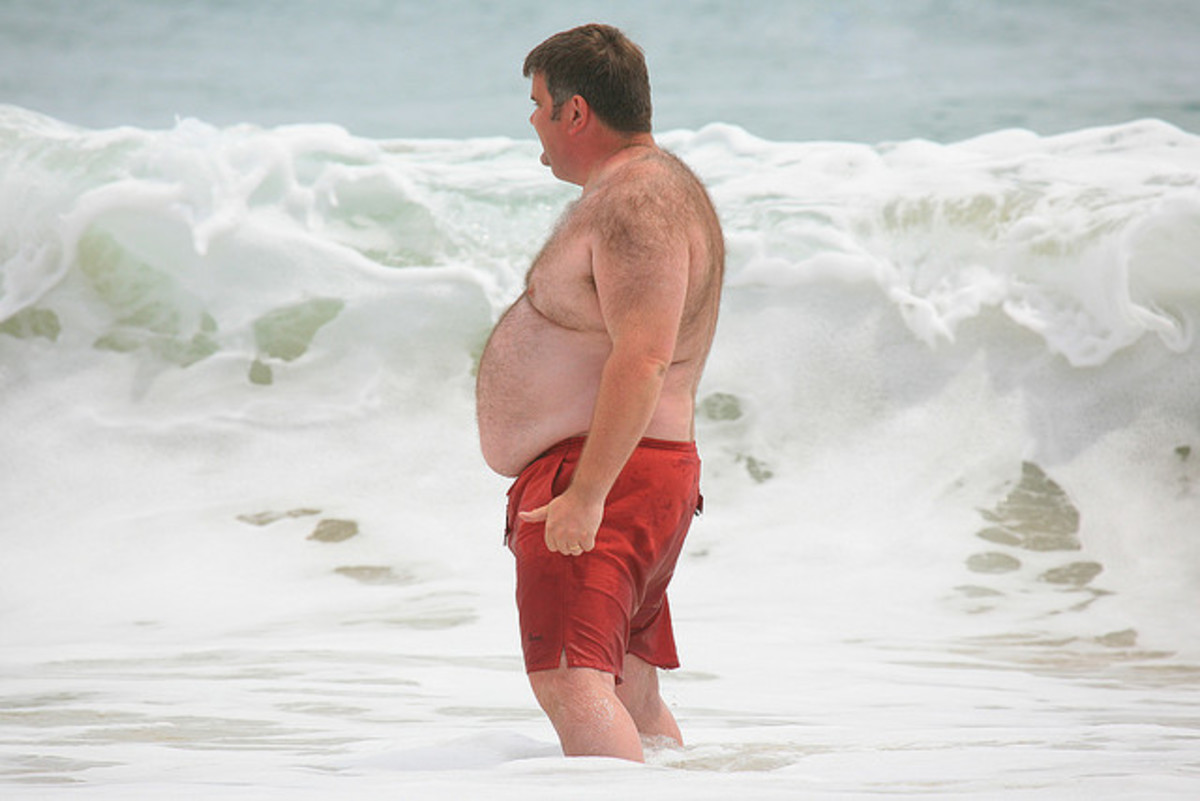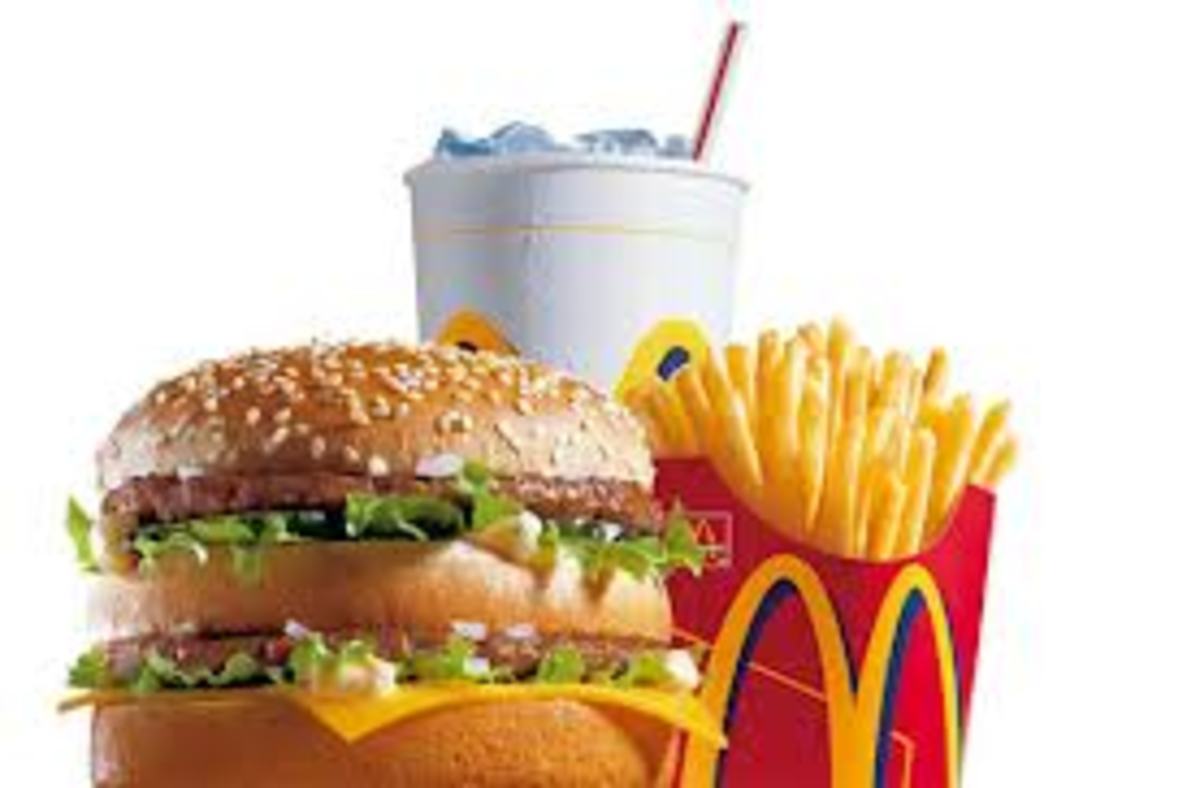The Obesity Epidemic in the United States

What Are the Causes of Obesity?
The cause of obesity is easy to determine. It's consuming too much food. Consuming more calories than the body uses will cause the body to store extra calories in fat cells around the body resulting in someone becoming fat or obese.
Some fat people like to claim that they are obese because of genetics or a medical problem. I always question those people to find out the truth that they may not realize. Did their medical problem develop before or after they became fat? What foods were they fed as children and have been conditioned to eat their entire lives? Were they an obese child? If so, were they physically active even though they were obese as a child?
These questions with honest answers can get to the truth of the root of the problem. Obesity is caused by ingesting too many calories and not burning those calories over the course of the day.
It's Been a Problem in the US For Years
Fat vs Obese- What is the Difference?
Not all fat people are obese, but all obese people are fat. A measurement of the body mass index, or BMI as they like to call it, can tell you where you are on the fat scale. If someone has a BMI measurement of 25 to 29.9 they are considered fat. If your BMI is over 30 then you are considered obese. If it is over 40, you are morbidly obese.
The BMI chart does have it's flaws. A muscular, fit person could very well have a BMI in the range that will classify them as being fat. Muscle weighs more than fat so that will need to be taken into consideration when calculating BMI for a muscular individual. A body builder will almost always be classified as obese when looking at the BMI. We all know that is far from the truth.
Obesity in American Children
There has been a stunning rise in obesity in children in the United States that started in the 1980s. According to the Center for Disease Control, in 2010 17% of children between the ages of 2 and 19 years old were considered obese. This problem has tripled in size since 1980.
One of the major causes of obesity in children is the same as the causes of obesity in adults. Consumption of high calorie foods with little or no nutritional value combined with little or no physical exercise will lead to weight problems. Today's child is more content to sit in front of the gaming console or computer with a Coke and bag of potato chips than the child of the 1970s who was out riding their bike and playing with friends until the sun set.
Parents need to take control of their child's activities. Limit their indoor time in front of the television and computer and make them go outside to participate in that dreaded physical activity called playing with their friends. Sometimes this can be a battle that a parent just doesn't want to get into with their child even though the cost to the child's health from becoming obese or fat can be devastating.
In some circles the problem with childhood obesity lies strictly with the parents and their lack of information or desire to raise a fit, healthy child. Some people have voiced their concern that if a child becomes obese that the parent is neglecting that child's basic needs. This is a debate within the health care and child welfare communities that has yet to be decided.
Studies have also shown that fat parents have more of a tendency to raise obese children. Children mimic their parent's behavior so if mom's diet consists of Big Macs and Twinkies, chances are very great that the child will be eating the same thing.
The Medical Costs of Obesity
There are more medical conditions caused by obesity than by smoking and obesity is close to surpassing smoking in the number of people who die from complications caused by obesity and being fat. One of the main differences between the two is that for the moment it is still generally socially acceptable to be fat or obese although this acceptance is changing rapidly. In a lot of areas, smoking in public is frowned upon. They are both dangerous to your health and both cost billions of dollars each year in medical costs.
Obese people suffer from many medical condition related to their weight.
- Joint pains and damage from carrying the extra weight that commonly leads to osteoarthritis.
- Sleep apnea is a common medical condition in obese people.
- Since the surface of the skin is a larger area and obese or fat people have skin that is folded over on itself, sweating is more common in obese people.
- Obese people are more prone to acne and other skin problems.
- Because of diet, obese and fat people are more prone to heart disease and other cardiovascular problems that can lead to heat attack or strokes.
- Type 2 diabetes is very common in fat and obese people and has recently rose to alarming rates in fat or obese children.
- High blood pressure is common in fat and obese people.
- Some types of cancer are more common in the obese. Colon cancer, thyroid cancer, cancer of the esophagus, kidney cancer and breast cancer in post menopausal women are all more prevalent in the obese population.
A report from Science Daily in April, 2012, suggest that the medical costs of obesity makes up an alarming 21% of the total cost of healthcare. Obese people are simply more expensive to physically maintain. The study points out that almost every medical condition that an obese person suffers from is more expensive to treat because of their obesity. The report also suggests that there is enough hard evidence on the medical costs of obesity to justify government intervention.
The conclusion is that if you are an obese adult or have obese children that you are simply more expensive to medically maintain and treat than a normal, healthier size individual.

Surgery to Lose Weight
Obesity in the US has risen to the point that some physicians have tailored their practice specifically to treat fat people. Obese adults who have tried everything to lose weight can resort to surgery to help them lose weight. Surgery is extremely dangerous in people who are suffering from obesity because of their size. It is a last act of desperation to finally lose weight that many obese adults have turned to.
In order to qualify for weight reduction surgery, an individual must be classified as morbidly obese on the BMI scale or be classified as obese with medical conditions that create the urgent need to lose weight.
There are three main types of surgery to help obese people lose weight.
- Gastric Bypass Surgery is when the digestive system is "re-routed." The stomach is decreased in size by 85%. The portion of the stomach that is usable is the part that is the hardest to stretch, reducing the chance of the patient being able to overeat and stretch the stomach out.
- Gastroplasty is not as popular as it used to be. The stomach is stapled and a band is used to reduce the size of the stomach significantly. The obese individual will not be able to eat as much resulting in weight loss.
- Lap-band Surgery is becoming a more popular surgery for the obese to lose weight. This type of surgery places an inflatable band around the top portion of the obese person's stomach which makes the stomach smaller. It slows the digestive process down which in turn, makes the individual feel full longer, reducing the amount of food they are able or wanting to eat.
The Social Stigma of Being Fat or Obese
History shows us that in some cultures fat or obese people were admired for their body size because it showed that they were well off financially. Plump was considered pretty and being thin was looked down upon because it meant the individual wasn't healthy or was too poor to sustain themselves. Times and opinions have certainly changed.
Today fat and obese people are generally viewed as being unhealthy, lazy or sloppy. Their obesity can create lower earning power and opportunities in the job world. Fat people are more often the butt of a joke. Being fat or obese today can be a chore within itself.
Media and the fashion industry are sending out the message that big is not beautiful. Stick thin supermodels bound down the runway in the latest fashions that most times are not even available in anything larger than a size 6. When you see a fat person in the news, it's generally a story about the obesity crisis and they have an uncanny knack for showing the obese person's back side in the report while at the same time, blurring or cutting off the person's head in the film.
There is a social stigma spreading toward fat people. It's generally a negative response. Fat and obese people take up more room. Are more apt to invade a thinner person's personal space in places like crowded buses, airplanes and other crowded places. They are driving up the cost of healthcare because of the additional illnesses and complications they acquire over time because of their size. It just isn't "cool" to be fat today.

The Food Industry and Obesity
If you simply take a look at what is in the food that we eat, you'll have a greater understanding of why people easily become obese. Our grocery stores are crammed full of overly processed junk foods in pretty packaging to disguise what is really inside. If more people would read the labels, do the math and change their eating habits to fit their lifestyle, obesity would not be as large of a problem as it is today.
Processed food is another term for junk food. Convenience comes at a cost and sometimes the cost is our health.
Companies create commercials that give us a warm and fuzzy feeling inside about how quickly we can have dinner on the table with the family. Put it in the microwave and in ten minutes you have a nice meal for everyone. When you go to the store and read the label, actually look to see what you are getting. These meals are high in calories because the serving sizes are adjusted to be so small that the average adult will eat 2 or more servings in one sitting. With the adjustment of the serving size the calories, fat, salt and sugar seem to be reasonable amounts when in reality they are high.
Another example is the old cereal commercials that stated they were part of a nutritious breakfast. The bowl of cereal was usually shown with a glass of juice, glass of milk and toast. Added calories to make up that nutritious breakfast. Even the cereals that are labeled as being healthy are suspect because when you read the label, you will see some sort of sugar or sweetener in the ingredients list.
The best way to fight obesity is to change the way we eat. Stop eating convenience foods such as microwave meals, processed box meals, fast food and restaurant food. While these foods will generally do no harm in limited moderation, too many people have become dependent on them as a regular part of their diet. It is common knowledge that convenience foods can cause weight gain so this is possibly one of the reasons that people view obese individuals as being lazy.
Educate Yourself
In order to combat weight gain, people need to educate themselves and use common sense in the process. Some things to remember when re-evaluating your diet to fight obesity are:
- Never take a company's word for a food that they have any financial interest in. Believe it or not, companies have come up with creative verbiage with dual meaning that is meant to make you believe they are saying one thing, when in fact it means something completely different.
- Actually look at serving sizes on food labels and ask yourself if eating just one serving is a reality for you.
- If you don't know what an ingredient is on a label, Google it to find out. After you do this a time or two, it will shock you to the point where you find yourself questioning everything to do with the ingredients in your food.
- Stay away from fad diets. Temporary diets don't work because once the weight goal is reached, most people actually think it's OK to go back to their old way of eating. A diet is not a temporary thing. It's a lifestyle change that you do for the rest of your life if you want to keep the results.
There's nothing easy about fighting weight gain or being fat. The best thing to do is stop making excuses and actually do something about it before the US government intervenes. Believe me when I say it's coming and it's coming sooner than anyone thinks.








